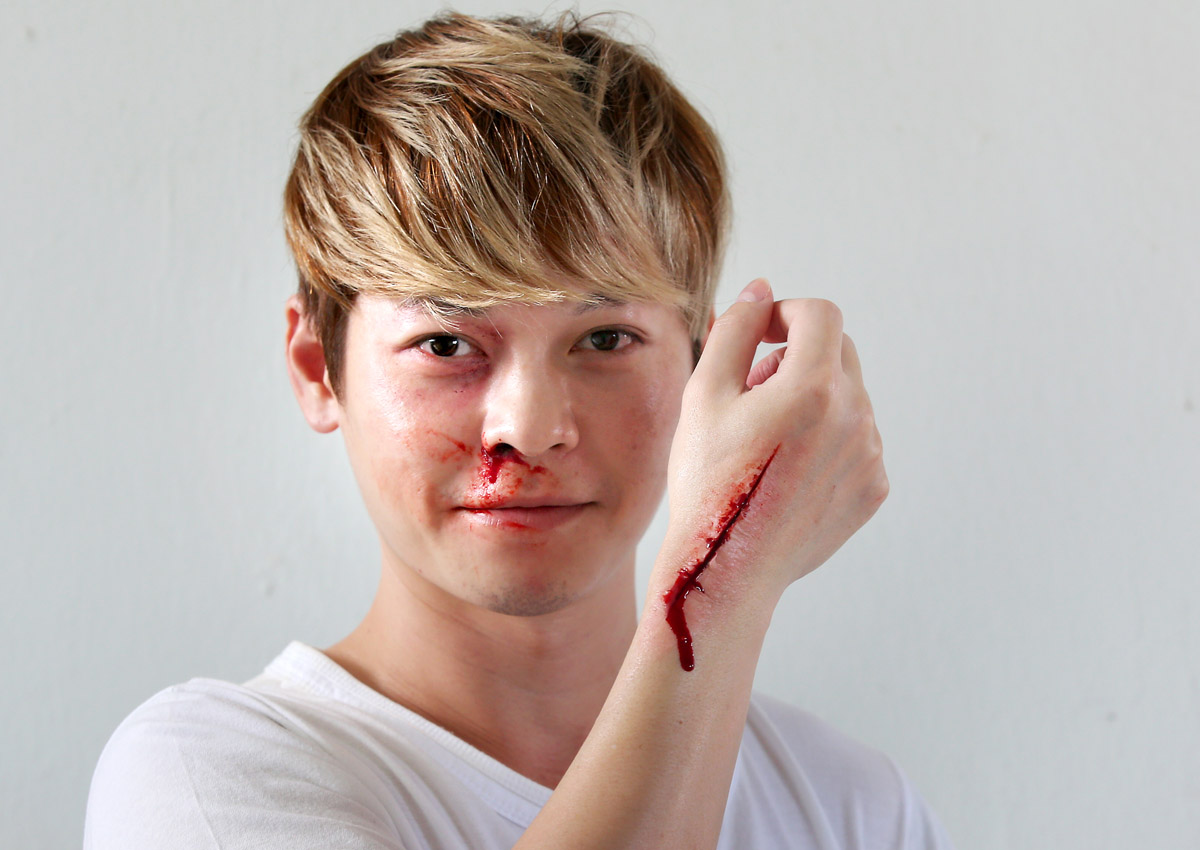E-mail enquiries from his potential customers read like an assassin’s job listing.
A head wound from a hammer? No problem, Mr Liew Boon Siong, or Kel Liew, as he is known by his friends, would reply.
Want a body part removed? It will cost you extra, but it can be done too.
But Mr Liew, 38, is no serial killer or sadistic torturer. He is a freelance special effects make-up artist who specialises in creating gory and graphic “injuries”.
His make-up work can be seen in television dramas and web series on artistes like Pierre Png or Ann Kok.
Each artificial wound can take between five and 20 minutes to create, depending on the complexity.
The diploma graduate from The School of Make-up expanded his repertoire to special effects more than a year ago, when one job required him to create a stab wound during the filming of a local drama.
Until then, he had been doing only regular beauty make-up for weddings and events, which is still his mainstay.
“I think I did a poor job of the stab wound,” he admits, adding that his interest was piqued ever since.
During his free time, he practises new ideas for wounds and bruises on himself.
That, or browsing through gruesome pictures of real wounds and bodies online.
All in the name of supporting his passion, he says.
“I am not obsessed (with gore). Some people think it’s weird, but I’m only trying to be as 100 per cent anatomically realistic as I can,” he says.
He admits that his curiosity sometimes leads him to take a closer look at wounds that strangers may have.
He quickly adds: “But it is not like I will take photos of their wounds or anything, that would be rude.”
Once, he accidentally wore a bloody-looking laceration wound out in public after rushing out to run an errand, drawing gasps from people.
Thankfully, no one called the police on him.
While the wounds look convincing enough to this reporter, Mr Liew confesses that most of the time, camera tricks are still needed to complete the effect.
Mr Liew says: “You need to play with light and angles to create depth in the wounds, otherwise it would look flat.”
One pet peeve, however, is the director’s reluctance to be as gruesome as he desires.
“They will sometimes tell me to tone down the blood used, probably because it may affect the (age) ratings,” he recalls.
He becomes his most daring self on social media, plastering his Instagram and Facebook pages with no-holds-barred versions of his works.
So realistic are his creations that even medical professionals are impressed. Some even offer tips on how he may improve on the realism.
“Being praised by my friends in the medical field is the most rewarding feeling of all. These are the people who have seen the real thing,” he says.
Although his wide knowledge of all things grotesque and his ability to recreate them artificially have shocked some people, Mr Liew says that criticism is part of the job.
Twice, pictures of fake wounds were removed from Facebook account after some users reported them, believing that they were real.
Instead of being offended, Mr Liew says he is secretly flattered when it happens.
He says with a laugh: “It just means that I did a good job.”
Secrets of the trade
1 Always discuss with the client about possible skin allergies, as some of the make-up materials can sometimes cause irritation.
2 The international community of special effects make-up artists is a close-knit one, so don’t be afraid to ask someone more experienced for advice.
3 Don’t be afraid to experiment and practise. Even material like chicken skin or soba noodles can be used to create certain effects, such as emulating body fat or tendons.

This article was first published on September 25, 2016.
Get The New Paper for more stories.






